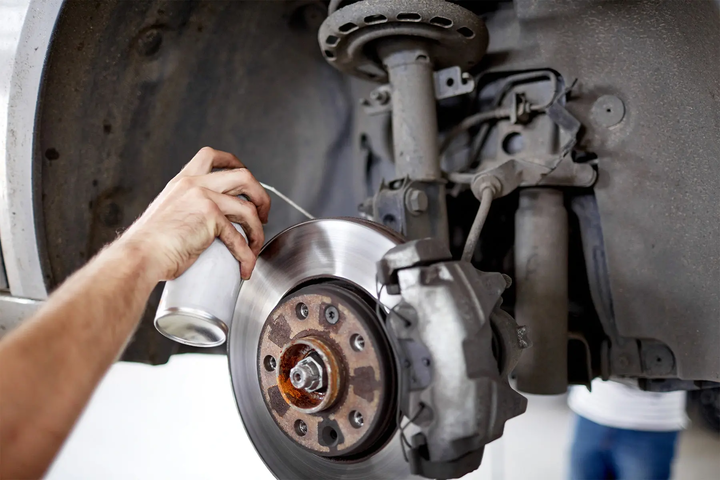
Luckily, providing your vehicle with the correct amount of oil doesn’t need to be difficult. In fact, it’s fairly straightforward. Here’s how to figure out exactly how much oil your car will require. read this article in shine armor blog.
Related products in shine armor:
Why is Oil Important?
First, let’s dive into the details of why exactly oil is important for your vehicle. Car engines have a lot of moving parts - and those parts can cause both friction and heat. Oil simply lubricates the car’s engine while absorbing the heat, which allows the engine to prevent overheating and work efficiently.
That being said, oil needs to be maintained. It’s not something that you’ll put in your car once and then not have to again for the automobile’s lifetime. Your car requires regular maintenance to continue running smoothly, and oil is no exception.
As time goes on, oil begins to break down and loses the thickness that helps make it so effective in the first place. This means that it is unable to perform its duties as well as it did when it was first added to the vehicle. For this reason, it’s a great idea to get into the habit of checking how much oil you have in your vehicle. Ultimately, only changing the car’s oil in the correct intervals can prevent this from happening. This helps ensure that the oil is clean, efficient, and doing its job to the best of its ability. In addition to this, the type of oil your car takes can contribute to how frequently it needs to be changed.
What are the Different Types of Oils?
There are several different types of oil, and what’s suitable for one vehicle might not necessarily be suitable for the next. Therefore, it’s essential that you’re checking that you’re using the right kind of oil (if you’re doing it yourself).
The different types of oil include:
- Conventional
- Synthetic Blend
- High-Mileage Synthetic Blend
- Full Synthetic Oil
- European Oils
Conventional Oil: This type of oil is petroleum-based and is created from crude oil sourced from underground. It usually has a lower price tag than other oil types, but also is more sensitive to temperature changes. In addition, it can thicken when temperatures are low, and is known for thinning when it gets hot. This type of oil is also predisposed to create sludge, which occurs because of a thickening of contaminants, oils, and carbons.
Synthetic Blend Oil: As you might have guessed, this type of oil is a combination. It's both conventional and synthetic, which allows your car to experience enhanced performance and lubrication while also protecting internal parts.
These oils typically have a longer lifespan because they don’t break down as quickly as conventional oils do. We should also note that they are better at resisting heat. While a synthetic blend oil won’t be as cheap as a conventional oil is, you do get a lot of bang for your buck while not paying as much as you would for a fully synthetic oil.
High-Mileage Synthetic Blend: Up next is the high-mileage synthetic blend oil. If your car has reached 75,000 miles or more, then this just might be the oil for you. Once your vehicle has reached this number, you’re going to want to take extra precautions. One of these precautions includes switching to this type of oil. It has all the benefits of synthetic blend oils but also has improved additives and detergents.
These protect the vehicle from extremely high temperatures, wear, and sludge build up. Most notably, the additives work to extend the lifespan of your vehicle’s engine. They protect seals, the piston rings, and beyond. There are also antioxidants added to this oil to prevent the degrading of oil because of oxidation.
Finally, there are also detergents added which help keep your engine clean and remove sludge. This is a great option because they last longer than usual petroleum oils would but still cost less than a full synthetic oil would. It’s a win-win.
Full Synthetic Oil: We’ve mentioned full synthetic oil plenty of times, so let’s talk about this popular type of oil. Full synthetic oil is essentially crude oil purified and broken down into basic-molecules. These are made to meet the requirements of vehicle engines. In addition, there are synthetically produced additives in this type of oil. If you’re comparing these to conventional oils, you’ll find that they’re more costly but also do a better job at lubricating, removing impurities, and last longer due to the molecule makeup. In addition, this type of oil is more heat-resistant than others, resist sludge build up, and are not usually as impacted by changes in temperatures. This means the engine doesn’t have to consume as much of a full synthetic oil.
European Oils: Last but not least is European oil. This type of oil has a lot of the same qualities as full synthetic oils do, however, it has special additives in it as well. This is designed for stricter emissions. For this reason, European oil is usually used for a luxury, European produced vehicle. This type of oil is the most costly.
How Much Oil Does My Car Need?
The amount of oil that your car requires is going to depend upon the size of the vehicle’s engine. If your car has a smaller engine, it’s going to require less oil than a vehicle with a larger one.
Of course, if you have any questions about your car specifically, the best thing to do is to check your car’s owner manual. That will provide exact answers to the questions you’ve been wondering. If you’re not finding answers there, you can also refer to the car manufacturer’s website, just be sure to check out the correct year of the car. Another option is to bring it into the shop, where a mechanic can help you figure out how much oil your car requires.
Still, there are ways that you can do that on your own. As a general rule of thumb, your car will require oil based on how many cylinders the engine has. That means:
- If your vehicle has a 4-cylinder engine, you’ll need about 5 quarts of oil
- If your vehicle has a 6-cylinder engine, you’ll need about 6 quarts of oil
- If your vehicle has an 8-cylinder engine, you’ll need somewhere between 5 and 8 quarts; this depends on the size of the engine (so check your owner manual)
The amount can also vary based on if you decide you’re getting an oil filter change too or if you’re simply swapping out the vehicle’s oil.
What if the car oil level is too low?
Maintaining the oil level of your car is crucial to keep your engine running smoothly. When the oil level is too low, it can cause significant damage to the engine. The oil serves as a lubricant for the engine, allowing the components to move smoothly and reducing friction. If the oil level is too low, it can cause increased friction between the moving parts, leading to overheating and possible engine failure. Low oil levels can also cause poor fuel efficiency and increased emissions. It is essential to regularly check your oil level to ensure that it is at the recommended level.
If you discover that the oil level in your car is too low, you should immediately add more oil. The type of oil you use should be specified in your owner's manual. You can purchase oil from an auto parts store or a gas station. To add oil, first, locate the oil filler cap under the hood of your car. Remove the cap and insert a funnel into the opening. Pour the oil into the funnel slowly and carefully. Check the oil level again after adding oil to ensure that it is at the recommended level. Remember not to overfill the oil, as this can also cause damage to the engine. Regular oil changes and proper maintenance of your car can help prevent low oil levels and keep your engine running smoothly.
How To Check The Engine Oil Level (Step-By-Step)
Checking the engine oil level is an essential part of maintaining your car's health. It is a simple and quick task that can save you from expensive repairs in the future. To check the engine oil level, start by making sure your car is parked on a level surface and the engine is turned off for at least 10 minutes. Then, locate the dipstick - it is usually located near the engine and marked with an oil symbol. Pull out the dipstick and wipe it clean with a lint-free cloth or paper towel. Reinsert the dipstick completely, then pull it out again to check the oil level. The oil level should be between the two markers on the dipstick, which indicates the minimum and maximum levels. If the oil level is below the minimum marker, add more oil to bring it up to the maximum level.
It is important to check the engine oil level regularly, at least once a month, to ensure your car is running smoothly. Low oil level can lead to engine damage and cause costly repairs. On the other hand, overfilling the engine with oil can also cause damage to the engine and reduce its efficiency. Therefore, it is crucial to maintain the oil level within the recommended range. If you notice the oil level is consistently low, it may indicate an oil leak or burning oil, which requires further inspection and repair by a professional mechanic. By following these simple steps, you can ensure your car's engine stays healthy and prolong its lifespan.
Shop by category:
Checking the engine oil level of your car is a crucial part of car maintenance. Here's a step-by-step guide on how to do it:
- Make sure the engine is cold and the car is parked on a level surface. This is important because the oil needs to settle in the oil pan before you can get an accurate reading.
- Open the hood and locate the oil dipstick. It's usually labeled with a bright color or has a loop at the end for easy access.
- Pull the dipstick out and wipe it clean with a rag or paper towel. You want to remove any oil residue to get an accurate reading.
- Reinsert the dipstick all the way back in and then pull it out again. Look at the end of the dipstick to see where the oil level is. There should be markings that indicate the minimum and maximum levels.
- If the oil level is below the minimum mark, you'll need to add more oil. If it's between the minimum and maximum marks, then the oil level is good. If it's above the maximum mark, then you'll need to drain some oil out.
Checking your engine oil level regularly can help ensure that your car is running smoothly and can prevent costly engine damage in the long run.
In Summation
Making sure that your car has the right amount of oil is essential to properly maintaining your vehicle. That being said, it’s also important to ensure that your car has the correct type of oil in it. Checking on both of these things can help guarantee that your car will enjoy a long lifespan. With products such as our Performance Booster Oil Additive, you can treat any oil-lubricated system no matter if it's a diesel or gas engine. The Performance Booster reverses engine wear by preventing rust, oxidation & reducing regular friction. you can buy this product from shine armor collection.





